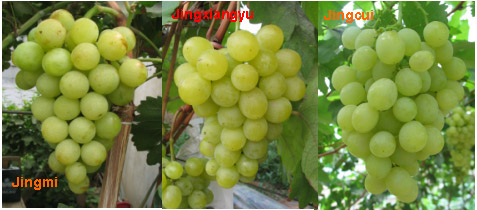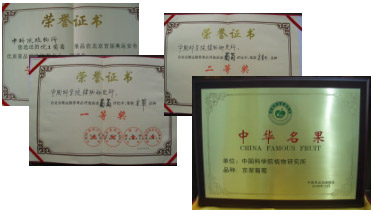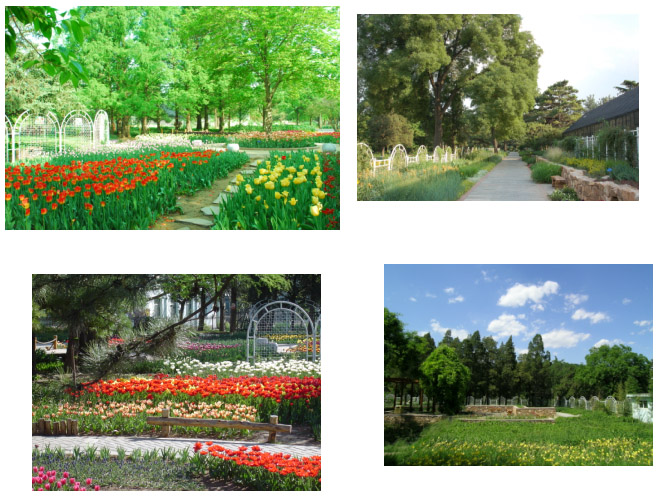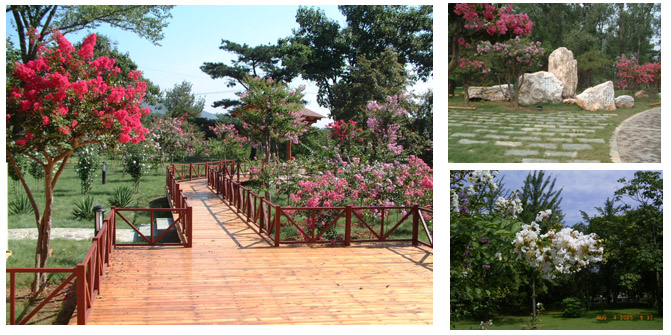|
The Beijing Botanical Garden, IOB, CAS (lat. 39o48' N, long. 116o28' E, and 76 m above sea level), was founded in 1956 with the approval of the State Council of China. The climate is temperate continental, with an annual mean teaperature of 11.6°C. The annual precipitation is 634.2 mm, and the relative humidity is 43%-79%. The garden is an important base for conservation and sustainable use of biodiversity and plant germplasm in northern China. It is also one of the major sites for disseminating knowledge about botany. The principal research orientations of the garden are 1) e x situ conservation and sustainable use of wild plant resources, 2) p hysiology and heredity of fruit trees, and 3) physiology and genetic breeding of ornamental plants. The garden covers 72 hm 2 with 20.7 hm 2 of display areas. Among the display areas are the Arboretum, the Perennial Garden, the Rose Garden, the Magnolia and Peony Garden, the Medicinal Herb Garden, the Gymnosperm Section, the Wild Fruit Tree Resources Section, the Environment Protection Plants Section, the Aquatic and Climbing Plants Garden, the Rare and Endangered Plants Section, the Crape Myrtle Garden, and the Tropical and Subtropical Plant Houses. The Botanical Garden has a collection of nearly 6000 plant species and varieties from home and abroad and is one of the largest sites for ex situ conservation among the botanical gardens in China. Owing to the great achievement in investigation and public education on biodiversity conservation and sustainable utilization of wild plant resources, the Beijing Botanical Garden has been awarded numerous titles in recent years by the government, such as "National Science and Technology Education Center for Teenagers," "National Ideology Education Base," "Public Education Base of Beijing City," "Public Education Center Haidian District" and "National Forestry Public Education Base". 1. Germplasm Resources Conservation of Tree Peony Following the introduction of more than 800 tree peony cultivars, a tree peony resource garden was established. Investigations of 484 cultivars, blooming naturally, were accomplished. We obtained 56 items of agricultural characters to set up a character database. A tree peony flower bud cDNA library was constructed, and 2241 raw expressed-sequence-tag (EST) sequences were obtained. Analysis and functional annotations of these ESTs were completed by use of bioinformatics.
2 . Grape Variety Breeding We bred three early-ripening grape varieties, named ‘Jingmi', ‘Jingxiangyu' and ‘Jingcui'. The varieties received approval from the Beijing Examining and Approving Committee of Forest Varieties in 2007. They have also received protection of the Variety Protection for Agricultural Plants of the China Agriculture Department.
Awards of new Varieties
3 . The Perennial Section The Perennial Section was originally constructed in the 1970s and was redeveloped in 2006 with the support of the CAS Knowledge Innovation Project for Botanical Gardens. This land encompassing 0.9 hm 2 has a collection of nearly 600 taxa (including cultivars) of herbaceous flowers (mostly perennials) and climbing plants belonging to 138 genera and 46 families. This collection ranks at the top of the herbaceous perennial display gardens in China with respect to the number of species represented. Through the redevelopment, the section is now divided into the Sun Plants Area, the Shady Plants Area, the Bulb Flowers Area, the Rock Plants Area, and the Climbing Plants Zone, on the basis of habitat requirements and habits of the plants. Four scenic spots, named "Songshi-Xunfang" (In Search of Flowers among Pines and Rocks), "Yulan-Yingchun" (Magnolias Facing Spring), "Guteng-Xinyun" (Old Vine with New Charm) and "Xuying-Songcui" (Evergreens in Morning Sunshine) are highlighted. Popular bulb flowers such as tulips, lilies and daffodils are planted, as are also Chinese endemic wild plants of giant lily ( Cardiocrinum giganteum ) and Sedum species, along with cultivars of day lilies, clematis, Aster novi-belgii , iris, plantain lillies and phlox, which have been introduced and bred by researchers.
4. Medicinal Herbs Garden The Medicinal Herbs Garden has an area of 1.5 hm 2 focusing on the collection of medicinal plants from northern China and some well-known medicinal plants introduced from abroad. More than 400 species belonging to 285 genera and 76 families are grown here. The garden is divided into display areas for sun medicinal plants, shade medicinal plants, aromatic medicinal plants area , climbing medicinal plants, poisonous plants, and foreign medicinal plants. Interesting features in the garden include a paved area with pine, a central place symbolizing the traditional Five Elements and Eight Diagrams, a pavillion and pergola, and a series of terraced planting beds. The Garden serves the purposes of medicinal plant resources conservation, research and public education. 
5. Crape Myrtle Garden The 1.25- hm 2 Crape Myrtle Garden, with more than 80 crape myrtle ( Lagerstroemia indica L.) cultivars, comprises the Red Myrtle Garden Section, Silver Myrtle Garden Section, spring Flowers Section, Summer Intoxication Section, Autumn Color Section, a Myrtle Square, a Poetic Path, and a Garden Bistro. It combines plant collection, display, research and enjoyment, and is one of the important ornamental plant areas in the Botanical Garden. In terms of long flowering season and diverse flower color, the crape myrtle is among the few tree species in northern China that produce bright–colored flowers in summer and autumn. It fully deserves poets' praises such as "The blooming crape myrtles produce colorful new flowers after the old from summer to autumn for a hundred days" and, therefore, bears the Chinese names of bai-ri hong (hundred-day red) and hong man tang (red in entire courtyard).
The website is http://garden.ibcas.ac.cn/eindex.htm.
|
Location:Home > Research > Research Divisions
Beijing Botanical Garden
Institute of Botany, CAS Add: No.20 Nanxincun, Xiangshan, Beijing 100093, China
Tel: +86 10 6283 6215 Fax: +86 10 6259 0833 E-mail: lengjing@ibcas.ac.cn
Tel: +86 10 6283 6215 Fax: +86 10 6259 0833 E-mail: lengjing@ibcas.ac.cn





